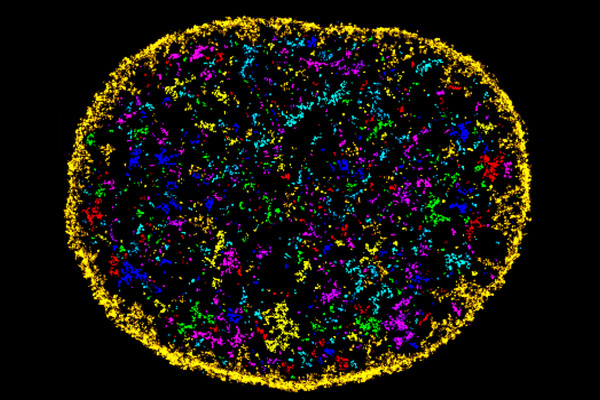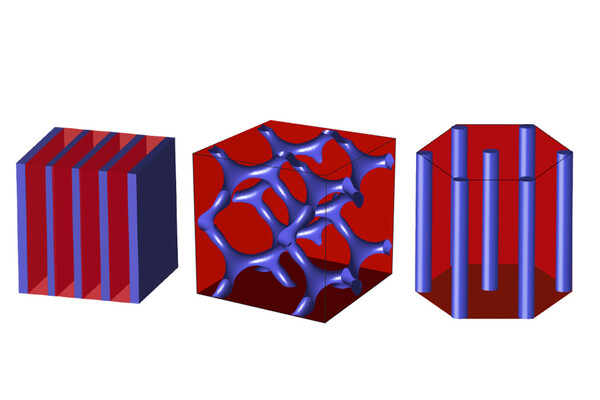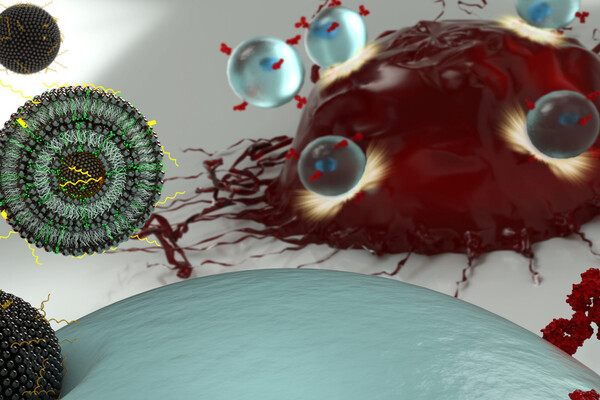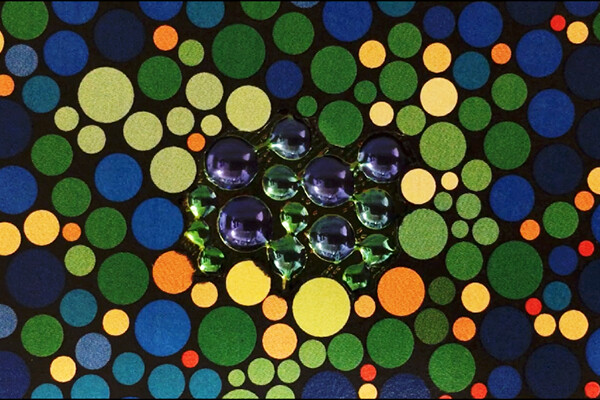
Articles from Evan Lerner


The dynamics governing mechanointelligence vary greatly along time- and length-scales, so detailed models of individual cells and their components are necessary to connect the effects of their physical environments to the downstream effects those forces have on biological processes. (Image: Penn Engineering Today)
Center for Engineering Mechanobiology 2.0: Developing ‘mechanointelligence’

The researchers developed a way of alternating between “blocks” of two types of polymer with precise lengths. These “multiblock copolymers” spontaneously form layered and cylindrical structures, which could be used for nanopatterning, a way of manufacturing microscopic components. The researchers also demonstrated a “double gyroid” structure which could be used for more complicated nanopatterning templates. (Image: Penn Engineering Today)
A new class of materials for nanoscale patterning

Artist rendering of the Starshot Lightsail spacecraft during acceleration by a ground-based laser array. Previous conceptions of lightsails have imagined them being passively pushed by light from the sun, but Starshot’s laser-based approach requires rethinking the sail’s shape and composition so it won’t melt or tear during acceleration. (Image: Masumi Shibata, courtesy of Breakthrough Initiatives)
How to design a sail that won’t tear or melt on an interstellar voyage

Social media bots may appear human, but their similar personalities give them away

Penn President Amy Gutmann, the eighth and longest-serving President in Penn’s history.
Penn Engineering reveals new data science building will be named Amy Gutmann Hall

The Center for Precision Engineering for Health will bring together researchers spanning multiple scientific fields to develop novel therapeutic biomaterials, such as a drug-delivering nanoparticles that can be designed to adhere to only to the tissues they target. (Image: Courtesy of the Mitchell Lab)
Penn establishes the Center for Precision Engineering for Health with $100 million commitment

The researchers’ artificial chromatophores consist of membranes stretched over circular cavities attached to pneumatic pumps. Pressurizing the cavity stretches the membrane, changing the pitch of the helix-shaped liquid crystal inside. Correlating the relationship between diameter, pressure, pitch and color, the researchers are able to treat each cavity like pixel, shifting its color to match the surrounding pattern in this demonstration from their recent study.
Engineering a polymer network to act as active camouflage on demand

Xunjing Wu on a mid-career switch to computer science
